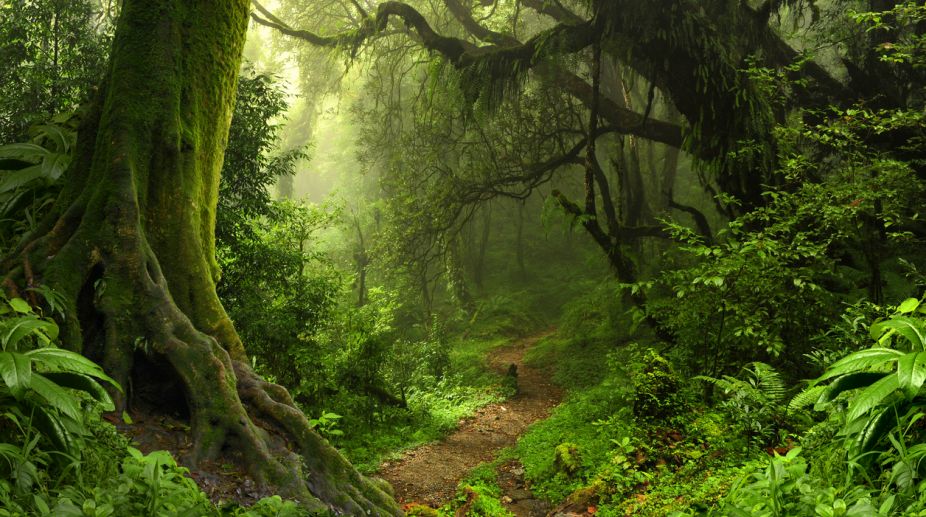More than 650 hectares of Uttarakhand land in grip of forest fires
Though no loss of life has been reported so far, officials say with the rise in mercury level the blaze is going out of control.

Representational Image (Photo: Getty Images)
The controlled burning of the grass and undershrub that was a feature of the jungles of Kargudi (in the Nilgiris) each summer, had been suspended for two years, with the result that late last February, when the fire spread into the area from around, it was somewhat uncontrolled and fierce. In April I found the forest floor black and bare in many places, and the trees charred a good way up their boles — in other places, the fire had been no less widespread, but comparatively mild in its effects, leaving the bush growth only singed.
There were mouse deer in plenty in the more severely burnt jungles; apparently they found shelter here in the bamboo clumps that had, surprisingly, escaped the fire, and in the fallen trees, charred superficially but sound, and with safe, deep hollows in their wood. The rains were delayed, but a thin growth of shrubs and saplings was coming up from the black earth, and this, evidently, was what attracted the animals to these forests.
In previous years, too, I had noticed mouse deer in this area, but had few opportunities to observe them. All that I could get were fleeting glimpses of them — a great, tearing noise in the dry, dusty undergrowth, a glimpse of a tiny patch of olive-brown hide with pale cream harness-markings on it, and the mouse deer had vanished! From what I had read and heard I thought these dinky little creatures were crepuscular and nocturnal, that they were out foraging timidly, never far from cover, at dawn and dusk and during the night — I have seen them active in the jungles of Karwar late at night.
Advertisement
But this time I noticed that even during the forenoons and late afternoons they wee sneaking about in search of green fodder, though for two or three hours around noon they stayed put in some safe retreat, when the sun was bright and hot.
I remarked on this to the mahout of my riding elephant, a Jane Kuruba who knew those jungles intimately, and his explanation was remarkable. No doubt, he said, the blackening of the forest floor and the trees by the fire, and the consequent sombreness of the outlook on all sides, made the artless little creatures imagine that night was already approaching, and that it was time to be up and about! After this, I did not discuss mouse deer and their habits with him, though for three days he helped me to search for them and to observe them.
It is a great mistake to suppose that because a man has lived all his life in the jungles, and is unversed in the arts, his understanding of wild animals will be prosaic, factual, and free from anthropomorphism — the illiterate Kuruba is as capable of flights of poetic fancy in these matters as our highly literate selves, but luckily much less frequently.
By repeated observation of different mouse deer, I was able to confirm a curious habit that I had observed, less surely and by flashlight, in Karwar years ago. When not alarmed and moving slowly through the jungles, they stop from time to time under a small bush, or in a tuft of tall grass, or beside a tree-trunk; and when stopping for such brief rests, a limb often remains trailing, as if frozen in a movement it had begun and not completed, a hind-leg stretched backwards, or a foreleg pointed acutely forward; these attitudes are often maintained for minutes on end, when the animal is engaged in looking around it. But when really needing a rest the mouse deer lies down on its belly, with its feet tucked comfortably beneath it.
Mouse deer nibble at grass and low shrubs and herbs, rather than browse them. Not once have I seen one of these animals grab a mouthful of grass or foliage and bolt it, as deer and antelopes do. They eat many of the fallen jungle fruits that deer also do, among them the fruit of Garuga pinnata, Gmelina arborea, and the mohwa.
The buck is bulkier than the doe, and has a less sharply pointed face; when panting in the beat with lips parted, the buck's sharp, well-developed canines are clearly visible, and the tongue is protruded slightly, in a rather dog-like manner. In fact, both in looks and behaviour these dinky little creatures are most un-deerlike, which is hardly surprising, considering that they do not belong to the deer tribe but to a family apart from it, the Tragulidae, which consists of two Asiatic and an African chevrotains. The Indian chevrotain is our mouse deer, commonest in the hill-jungles of South India.
These animals can climb slopping tree trunks, and recently I saw one scramble up a slanting teak and disappear into a gaping hole some four feet up the blow. When I sneaked up to see if it was in, I found nothing — it had left by another hole at the base of the tree, on the other side.
Mouse deer need the right kind of cover to survive from their enemies, and they have many, for their whitish flesh is as highly esteemed by predatory animals as by men with snares and nets. Luckily the lantana, which chokes up many jungles where forestry operations have been carried out, provides them with highly suitable cover, but then they have to emerge from its prickly and closely tangled protection to feed.
This was published on 26 july 1964 in the sunday statesman
Advertisement